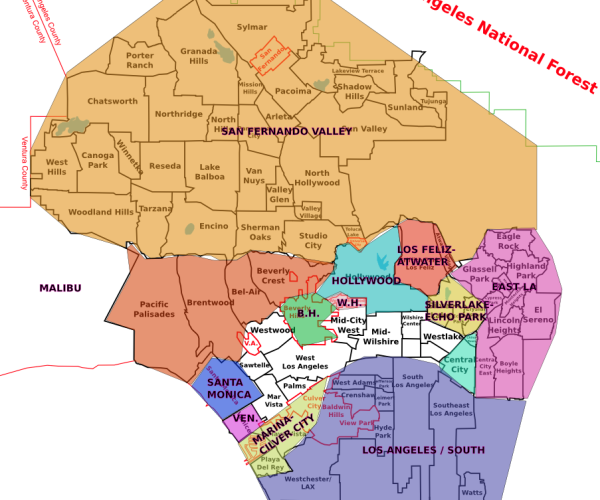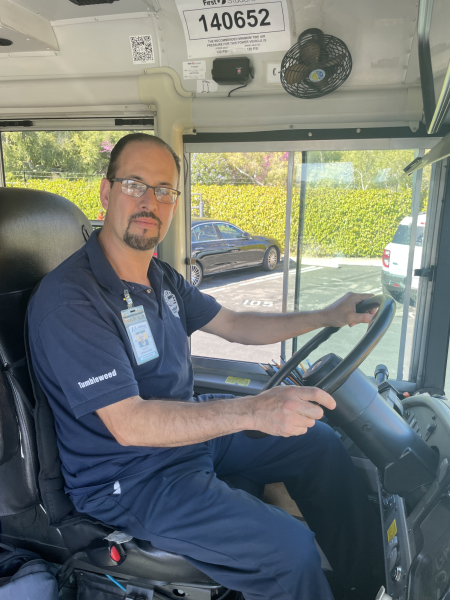
For Michael Herskovitz ‘26, the city is a better place to live than the valley because of its strong Jewish community. On Pico Boulevard, which is the heart of Jewish life in the city, “you have all the Kosher restaurants right at your fingertips.” Michael’s favorite restaurant on Pico is Jeff’s Gourmet Sausage Factory. He also appreciates the variety of shuls the city has to offer: “Don’t worry, there’s 27 in one block.” Michael shares how kids in the city meet up at parks or at friends’ houses saying, “it’s definitely a stronger community.”
On the other hand, Sherman Oaks citizen Benny Signer ‘24 feels a sense of community and happiness in his valley neighborhood. “The LA community can be found to a stronger degree in the valley,” says Benny. He feels that the valley neighborhoods and top spots like the Galleria can be “less trendy,” there are fewer people around, yet the people “care about the well being of [the area] more.”
The opinions expressed by Michael and Benny are undoubtedly representative of how other Milken students and LA citizens feel about the city and valley. One of the most asked questions between students is “Do you live in the city or the valley?” This longstanding separation between Angelenos living in the city and the valley has transpired for years. Students have become extremely biased to the neighborhood and area that they live in.

LA’s sprawling, large layout is a factor that divides people, groups, and areas from one another. The general structure of LA confuses most of the city’s citizens. It’s super hard to understand – which areas are independent cities (Beverly Hills, West Hollywood, Santa Monica), and which areas are just ‘communities’ in LA (Marina Del Rey, Venice, Century City).
Milken’s location contributes to the divide of students. Milken is located in the hills of the Santa Monica Mountains on Mulholland Drive, between the city and the valley. Students live all over Los Angeles and commute to school from West LA, Santa Monica, Pico-Robertson, West Hills, and many other neighborhoods. The 405’s treacherous miles that span North and South across LA lead directly to Milken from both directions. Is the Mulholland Bridge that leads to Milken the line between the city and valley, or is it somewhere else?
While the valley is sprawled out and grid-like, Signer feels that the “valley is well laid out,” there are major streets every half a mile, and that allows for a lot of restaurants and small businesses. He likes the area because of the “experiences you can get in the valley.” “You’ll probably pass a taco stand in a tent on the side of the road where you can get a horchata.” Addison Cooper ’25, who recently moved from the city to the valley says how everything in the valley is on Ventura Blvd, whether “you’re in Sherman Oaks, Encino, or Tarzana.” Signer’s final pro-valley point is that the “valley has a lot more shade than the city” because there are more trees, according to this LA county tree canopy map:

Benny believes that Milken’s location does “contribute to our community because it’s right between the city and the valley.” He realizes that there is a bubble at school, because “Milken’s location is a unique situation.” Milken students come from all over LA, so that kind of “opens the bubble a little bit,” as students drive to different areas and explore. But for Michael, his opinion is different because he doesn’t drive. “You definitely don’t have as many opportunities to spend time with your friends.” For non-drivers, it’s not realistic to ask parents or someone else to drive them all the way over the hill on a regular basis. Benny says that it would also be fun if Milken was not “on top of a mountain,” so students could walk from school and “get In-N-Out with their friends.”

Michael notes that one of the most inconvenient parts of living in the Pico-Robertson area is the Milken’s bus system, and the traffic that conflicts with his route daily. When he talks to people who don’t take the bus, they are “astounded at how long the bus route takes.” “[The bus system] affects sleep a lot,” says Michael, who gets to the bus stop at 7 AM each morning and gets home at 4:50 PM on a daily basis, if he isn’t doing any activities at Milken after school. Now that Addison Cooper lives in the valley and not the city, she says that the main downside of living in the city is “the traffic,” especially if someone famous is in town. It’s hard for Michael to have time for extracurricular activities and he has less time to do work than if he lived closer to school.
There are also a few Milken students who live in Santa Monica. And they are insistent that Santa Monica is definitely not part of Los Angeles in any way! In fact, it has a completely “different vibe,” according to junior Max Mooney, because people are just “happier in Santa Monica.” He lives four blocks away from the ocean, and spends a lot of his free time at the beach, or in nearby nature, like hiking in the Santa Monica Mountains. Because of Santa Monica’s small size, which is three by three miles, Max can walk to most spots in the city, like Main Street and 3rd Street Promenade. Addison Cooper feels similarly about the city; that “it’s easy” because you can walk around to different places. Since most Milken people don’t live in Santa Monica, Max usually has to drive more than half an hour to see his friends. But the bottom line is that he would never say “I live in LA.”
While students are spread across Los Angeles, and their lives may differ based on where they live, being at school gives us a chance to connect with other people. Hopefully, Milken as a community school allows us to branch out. Instead of saying ‘I hate the city’ or ‘I hate the valley’ we can explore the areas of Los Angeles we might have previously disliked and maybe our views would shift positively.





Elizabeth Hoffman • Apr 11, 2024 at 10:10 pm
Genuinely such a good article, thank you Noa!!!!